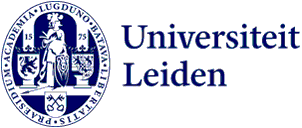The Design-Thinking method for stimulating knowledge transfer in organisations
Sharing knowledge based on research within organisations presents a challenging task. How can this be done effectively? What steps should be taken to ensure that knowledge obtained from research is shared and applied in the organisation's daily practice? On 8 May, the Leiden Leadership Centre (LLC) and partner organisations came together for an interactive session on Design Thinking, to answer these questions. The session was led by Daniek Bosch from the Leiden Learning & Innovation Centre (LLInC).
Why Design Thinking?
Design Thinking is a human-centred approach that focuses on understanding people's needs and problems to develop innovative solutions. Although the method originated in the design world, it also has great relevance in the public sector. The method is based on the principle of empathy and, as a result, enables public professionals to better understand citizens' needs and experiences.

Design Thinking can also facilitate more resilient and responsive public services and policymaking. It promotes a culture of innovation, collaboration, and experimentation within the public sector. Design Thinking encourages professionals to let go of their old ways of thinking and experiment with new ideas and approaches. After the workshop, Pim van Vliet, Municipal Secretary of the Municipality of Leiden, said that Design Thinking is not only very helpful, but also a lot of fun. It encourages listening, asking follow-up questions, solution-oriented thinking, creativity, and determining the issues at hand. This makes Design Thinking an attractive method for public sector leaders to explore.
Design Thinking as a tool for generating leadership insights
In a recent interactive Design Thinking session, participants explored how insights from leadership research can be translated into actionable processes within organisations. The aim was to come up with solutions to support public managers in their leadership roles. Using the five phases of the Design Thinking method, participants got to work on practice-based case studies.
The first phase of this method is all about empathy. Teams of participants used role-playing sessions to be able to empathise with the issues of the intended target group. Conversations with this target group led to a deeper understanding of the problem and provided important considerations in finding a solution. For example, in one of the role-play sessions, participants assumed the role of a team leader who experienced little connection with their team. By asking questions and understanding where the problem came from and what the desired situation would be, the groups got a clear image of the challenges faced by the target group.

Participants then moved to the definition phase, where they elaborated on the insights from the empathy phase. The aim was to define the needs of the target group using a problem statement in the form of a 'how can we...' question. For example: 'How can we create more connection in this team?' This question met the three criteria for a good Design Thinking problem statement: focused on people, broad enough to generate open ideas, and specific enough to come up with concrete solutions.
In the ideas phase, participants were challenged to think creatively by coming up with different solutions. The aim of this phase was to generate as many ideas as possible to help solve the problem outlined earlier. This resulted in several creative solutions. The groups then continued to discuss which idea was the most innovative, original, and relatively easy to implement. Having made their choice, the groups moved on to the prototyping phase.
The next step was to create several prototypes to discover what works and what does not. A prototype had to be easy to implement and have a lot of impact. In other words, the prototype must have the WOW! factor. During this prototyping phase the participants focussed on describing the steps needed to implement the chosen solution in practice. Participants had to imagine they were present during a project evaluation meeting in 2025. They made an analysis of what led to the success of the project, what challenges were overcome, and which people were involved. This approach of looking toward the future quickly showed that the sustainable implementation of even the simplest ideas can be very challenging. To be able to set their plan in motion, they looked at what steps could be taken in the coming weeks.
With the prototype, the participants returned to the target group to gauge their reaction. This provided new insights and areas for improvement, which helped to further refine the solution. For example, testing the prototype might show that the original problem was not the right problem, or that assumptions had been made while coming up with the solution that turned out to be wrong. Using these insights, participants revisited to earlier stages and repeated (part of) the process.
Experiences with the Design Thinking method
Design Thinking has proven to be a valuable tool for generating new ideas and applying leadership insights to specific organisational processes. The interactive session offered participants the opportunity to harness their creativity and work collectively on solutions that support public managers in their leadership challenges. Through the Design Thinking method, organisations can boost their leadership behaviours in terms of innovation and improvement. After completing the workshop, Pim van Vliet, Municipal Secretary at Municipality of Leiden, says he will continue to develop the Design Thinking method within the municipality.
Furthering Public Leadership
The Leiden Leadership Centre (LLC) is a platform for research and education in the field of public leadership. Within the programme ‘Furthering Public Leadership’ (VPL), the LLC, and various public organisations work together to conduct extensive research into and continue to advance leadership. Are you interested in the Design Thinking method? Contact the LLC to find out what we can do for your organisation.
